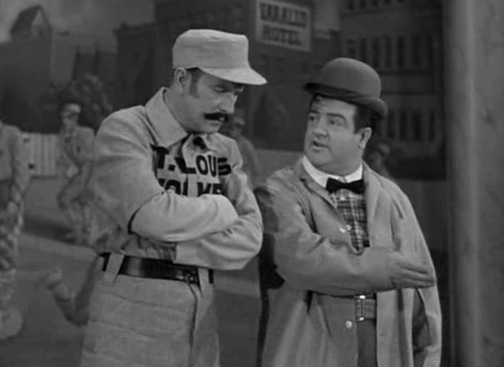Who’s on first?
That’s the second time this week that I’ve started off an article with that sentence, and it’s simply because the first base position is still very convoluted for the Mets with Ike Davis in the mix.
It’s my belief that the Mets have no intention of heading into the 2014 season with Ike Davis on the roster, as a mutual splitting would be most beneficial for both sides. I also believe that most teams recognize that this is the Mets’ intentions, so rather than give up a mid or top tier prospect for Ike, they will wait for the Mets to release him and then sign him.
The Mets seem fully prepared to head into the 2014 with Lucas Duda at first base, and possibly a platoon situation where Josh Satin will be in the lineup against left-handed pitchers.
The Mets had high hopes for Duda. I recall Terry Collins once saying he had as much power as anyone in the National League. Many people like Duda’s offensive skill set, while others believe that for a man of his size, he has the offensive mindset of a leadoff hitter. They want to see the Lucas Duda from his call-up in 2011—the guy who showed the promise to not only hit for power, but average over those 100 games.
I started to wonder why a man that is built like a lumberjack would be taking the offensive approach of a top-of-the-order hitter. I wondered if the answer was somewhere in the numbers…
Duda’s Pitch Types
 In 2011, Duda saw the highest percentage of fastballs that he has seen over the past three years. As you can see from the graphic, his fastball percentage (FA%) has dropped off by about four percent, while the amount of curveball (CU%) and sliders (SL%) he has seen has increased.
In 2011, Duda saw the highest percentage of fastballs that he has seen over the past three years. As you can see from the graphic, his fastball percentage (FA%) has dropped off by about four percent, while the amount of curveball (CU%) and sliders (SL%) he has seen has increased.
This is not uncommon. As scouting reports start circulating about hitters, the pitchers will adjust the way they pitch to certain hitters. A major increase came with the amount of curveballs that Duda is now seeing with compared to his 2011 season. Once the pitchers start changing the way they pitch to the hitter, the hitter has to also adjust. These adjustments will ultimately determine success of a player at the major league level.
Duda’s Aggressiveness
 For those who are upset with Duda’s approach, and his lack of aggressiveness at the plate, you’re right. Not only is Duda swinging a pitches out of the zone at a lower rate (O-Swing%), but he is also swinging at pitches in the strike zone at a lower rate (Z-Swing%). While it’s impressive to see him laying off pitches out of the strike zone, it’s disappointing to see that he is letting strikes go by, which has become somewhat of a pet peeve amongst Mets fans.
For those who are upset with Duda’s approach, and his lack of aggressiveness at the plate, you’re right. Not only is Duda swinging a pitches out of the zone at a lower rate (O-Swing%), but he is also swinging at pitches in the strike zone at a lower rate (Z-Swing%). While it’s impressive to see him laying off pitches out of the strike zone, it’s disappointing to see that he is letting strikes go by, which has become somewhat of a pet peeve amongst Mets fans.
Another alarming stat is that his contact rate has dropped dramatically—by nearly ten percentage points. He was making contact with 90.1% of the pitches thrown in the strike zone in 2011 when he compiled a .292 batting average, and only 80.6% in 2013 where his batting average was .223.
Putting It All Together
After looking at both of the charts above, it’s easy to see what is going on with Duda. All of the information is tied together. Duda is, in fact, less aggressive at the plate. He is swinging less because he is seeing less fastballs. He is also making less contact with pitches in the strike-zone because he is seeing more off-speed pitches. Rather than adjusting, he is opting to wait for fastballs, and he is getting himself deep into counts. When he’s deep in the count, he is forced to swing at the off-speed pitches which causes more swings and misses than in 2011 (lower overall contact percentage).
This combination drives up his strike out rate, and decreases his batting average and the amount of damage he can ultimately do with the bat. While Duda’s walk rate has increased, that increase means nothing if it comes with a decrease in almost every other offensive category. What would be impressive is seeing his walk rate increase, while he also improved his other statistics.
When Duda makes contact, and puts the ball in play, good things happen. For how low his batting average was in 2013, his BABIP was .276—in 2011, it was .326. But for Duda to regain his 2011 form, he will have to adjust his hitting approach. The pitchers have adjusted to him, and rather than adjust, Duda seems to be going ahead with the same approach which is crippling him offensively.
I’m reminded of this quote from CBS.com back in 2012, and wondering if Duda has progressed at all since then:
What Collins does know without a doubt is that Duda isn’t the same timid hitter that originally arrived in the clubhouse last year.
“He now believes in himself,” Collins said. “Where he came up with some doubts last summer, in the beginning he talked about it and vocalized it: `I’m not sure I belong here.’ Well I just think now he believes he belongs here.”
We can break baseball down to it’s simplest form and what you have is Darwinism—like animals striving for survival in the wild, players have to adapt or die. Some of them will do whatever it takes to survive, which is evident from them opting to use Performance Enhancing Drugs. While I’m not saying Duda should use PEDs, he does have to adapt.
If Duda can adapt, he could be the one standing victorious in this game of Survivor to see who is on first base for the Mets in 2014.















